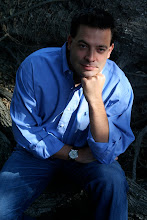This past weekend, Mission Street Church participated in it's first Multisite test site (wow that's a lot of "sites" in one sentence) worship experience. While celebrating worship in Camarillo, at our usual time and place, at the Edwards Movie Theater at 9:30AM, at the very same time a totally separate congregation in Winters, California, 650 miles away, (Winters is a small city 40 miles west of Sacramento), were watching a pre-recorded video of our Mission Street worship service. The results seem to be a success. One congregant in Winters said, "Mission Street was a big hit in Winters." Another said, "It was a great message." Of course, more details and nuances need to be ironed out, but it might appear that Multisite worship is a thing of the future.
There are several specific aspects about this past weekend's Multisite venture by Mission Street that I am excited about:
First, Mission Street is a brand new church in it's 32nd week of worship (just over 6 months), that is trying the Multisite approach. Most Multisite churches are built from very large congregations that have been organized for years. Mission Street seeks to build the concept of Multisite worship into the very DNA of our new church.
Second, the church that Mission Street connected with is actually in a different denomination. Mission Street is a member of the Presbyterian Church (USA). The church we did a Multisite in is Evangelical Presbyterian Church (EPC). I believe that as denominationalism continues to diminish in America, that this kind of reaching across denominational isles "so to speak" is a goal that should be sought after whenever possible.
Third, in short, it was FUN! Participating in this Multisite experience as a brand new church, helped Mission Street, in it's infancy, feel like it was a part of something much larger than itself. It helped our new congregation feel like they were not just one group of believers meeting in one space, but that their worship actually stretched across many miles and cities - and mattered!
Multisite Church can, of course, mean many things. In our research of the subject, we have found at least 5 different models of these churches (and there are many more):
One, a group of Christians meet in a living room to watch a video or "livestream" of a church service.
Two, a brand new congregation that meets at a separate location to watch a video or "livestream" of a
church service in another location.
Three, an existing congregation that doesn't have a pastor, or whose pastor doesn't want to focus on
preaching, watches a service from another location.
Four, a small group of believers watch a service, and then work on a study guide together.
Five, just one person sits at a computer screen and watches a service and is fed by the worship
experience.
The largest Multisite Church in America is a church called "LiveChurch.tv", which is led by lead pastor Craig Groeschel, and is considered the second largest church in the United States. "LiveChurch.tv" has nineteen locations in five different states. That church, with it's many sites around the country, has around 60,000 - 100,000 attendees each weekend who meet in movie theaters, school auditoriums, and community centers to worship.
Recently, in a talk about the future of Christianity in America, Rick Warren, the senior pastor of Saddleback Community Church talked extensively about Multisite churches. He asserted that the era of megachurches is not, as some have suggested, over. He said in his talk that the very first church in history, the so-called "Acts 2" church in Jerusalem went from around 120 attendees to around 100,000. Rick went on to say that 100,000 members is ten times the size of Saddleback. But, he said, the first megachurch began a kind of first century Multisite dynamic where they began to meet in "temple courts" as smaller groups. "One church, multiple locations," said Warren, "One location, multiple venues." The first church in history, the "Acts 2 church" was a Multisite church experience.
In my own experience as a New Church Developing Pastor, and having started three new churches in my ministry (two of which are still thriving), I have seen a vast evolution in the way that people associate with a new church.
* In the 1960's, a pastor would knock on the door of a person's home, invite them to church, and that person would come to the church.
* In the 1980's, innovative pastors would send out a postcard to a home and invite a person to church, and that person would come to church.
* In the 1990's, cutting edge churches would send out a post card that would direct people to a hot website that would get people to come to church.
* In 2015, leading churches send out a postcard that gets people to the website, and there a person can find video content, and that video content is what many people consider church today.
As we speak, Mission Street is in conversation with a Presbytery in Colorado about the possibility of expanding our Multisite worship experience to several communities there. Please pray for this exciting possibility!
Multisite Churches Are the Future
All For Now,
GB


I question whether a multi-site church, in cases when the sites span counties and states, could be classified as one church rather than many local churches which import its content from the same manufacturer.
ReplyDeleteAt the heart, is the question, "What is church?'" And the important follow-up, "How do we know this?"